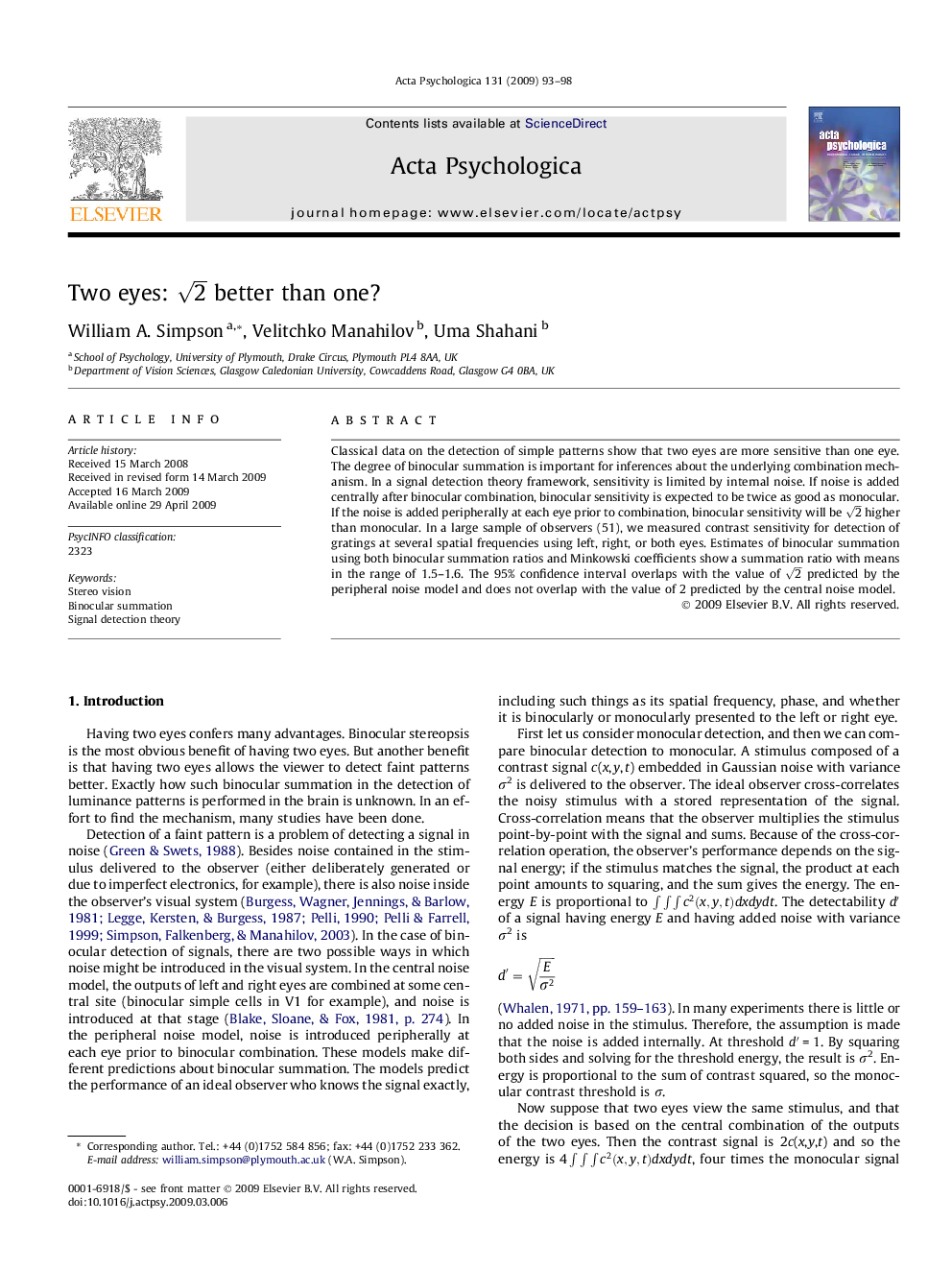| Article ID | Journal | Published Year | Pages | File Type |
|---|---|---|---|---|
| 920359 | Acta Psychologica | 2009 | 6 Pages |
Classical data on the detection of simple patterns show that two eyes are more sensitive than one eye. The degree of binocular summation is important for inferences about the underlying combination mechanism. In a signal detection theory framework, sensitivity is limited by internal noise. If noise is added centrally after binocular combination, binocular sensitivity is expected to be twice as good as monocular. If the noise is added peripherally at each eye prior to combination, binocular sensitivity will be 2 higher than monocular. In a large sample of observers (51), we measured contrast sensitivity for detection of gratings at several spatial frequencies using left, right, or both eyes. Estimates of binocular summation using both binocular summation ratios and Minkowski coefficients show a summation ratio with means in the range of 1.5–1.6. The 95% confidence interval overlaps with the value of 2 predicted by the peripheral noise model and does not overlap with the value of 2 predicted by the central noise model.
